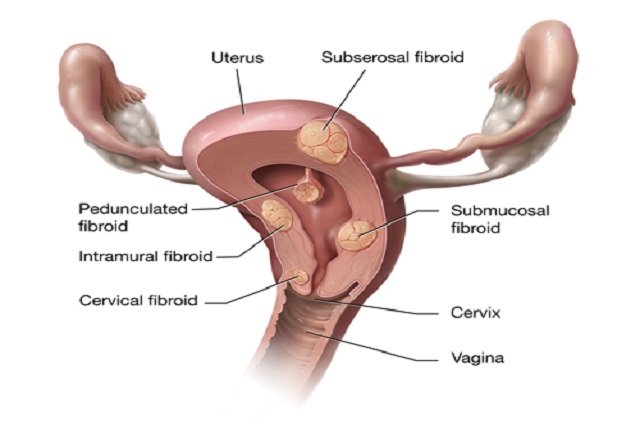Inflammatory bowel disease
1. Definition Inflammatory bowel disease (IBD) is a group of chronic disorder in which the lining of the intestines become inflamed, causing symptoms such as diarrhea, severe or chronic pain in the abdomen, weight loss, loss of appetite and rectal bleeding. The symptoms can range from mild to severe, and
read more
Rheumatoid arthritis
1. Definition Rheumatoid arthritis is an autoimmune disease. The arthritis is caused by the body’s immune system mistaking its own tissue cells to be foreign, thus continuously releasing white blood cells to attack the perceived invasion. As a result, patients suffer from pain, swelling and inflammation. A joint is the
read more
Uterine Fibroid
1. What are uterine fibroids? Uterine fibroids, or leiomyomas, are common non-cancerous smooth tissue growth of the uterus that appears during the woman’s child bearing years. They are benign and not associated with an increased risk of uterine cancer; most will never develop into cancer. However, uterine fibroids can vary
read more
Ulcerative colitis
1. Definition The colon, or large intestine, is a part of the digestive system. Its functions are to absorb water, salts and remaining nutrients and move the waste content to the rectum. The colon contains billions of bacteria, creating a healthy gut environment for the digestive system. Ulcerative colitis (UC)
read more
Cataracts
1. Definition Cataract is defined as a clouding of the normally clear lenses in the eye. In healthy people, the lenses focus light onto the retina, allowing them to see clearly. For people with cataracts, as less light can travel through the lenses, their vision is affected and it will
read more
Insomnia
1. Definition Insomnia is a sleep disorder, described by the difficulty in falling asleep or staying asleep for a long enough period to feel refreshed in the next morning. Patients suffering from insomnia could have their life impacted in several ways, often experiencing fatigue, low mood, difficulty concentrating and decreased
read more
Cervical fibroids
1. Definition Cervical fibroid, or cervical leiomayoma is a type of fibroid that develops in a woman’s cervix. Fibroids are small, non-cancerous growth that appears in the reproductive system of women of child bearing age. Often they are benign and will not develop into cancer. However, symptoms such as bleeding
read more
Hairloss (Alopecia)
1. Definition Hair loss, or clinically known as alopecia, is the thinning of hair on the scalp. Alopecia can be temporary or permanent. It occurs gradually with age in both men and women, but usually more pronounced in men. There are three phases to a hair cycle: anagen, catagen and
read more
Stroke
1. What is stroke? Optimal function of the human brain is critically dependent on the consistency of the blood flow circulating the brain. Through a complex network of capillary vessels, the brain receives the necessary oxygen and nutrients and leaves its metabolic waste. Any obstruction or impairment to this vascular
read more
Heart attack
The heart is the primary organ of the cardiovascular system. It is a beating muscle that continually pumps blood to the rest of the body. The coronary arteries supply the heart itself with the necessary oxygen and nutrients it needs to function effectively. Red blood cells, white blood cells and
read more
